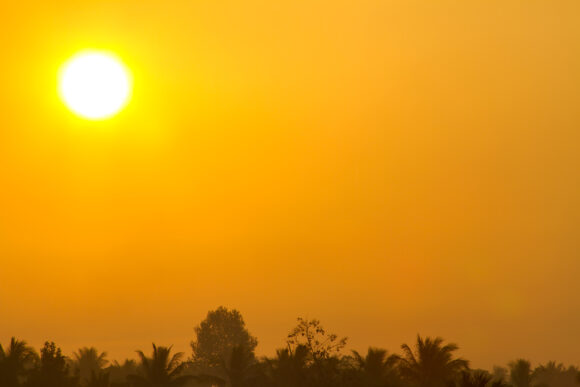The heat dome that led to record-high temperatures in Mexico is forecast to expand northward and bring higher temperatures to parts of the Western U.S., according to AccuWeather.
Meteorologists say 82% of Mexico was experiencing conditions ranging from abnormally dry and exceptional drought as of May 1. Records show this has been the worst drought for much of Mexico since April 2011. The highest temperature recorded in Mexico so far this year was 124 degrees Fahrenheit at Galinas on May 9, less than two degrees from the record high for Mexico of 125.6 degrees Fahrenheit set in 1995 in Mexicali. The hot and dry conditions have also contributed to several large wildfires this spring in Mexico.
The massive heat dome parked over Mexico will begin to shift northward and into the Southwestern and South Central states next week, according to the forecasting service.
“There is the potential for a prong of triple-digit heat to develop over the interior valley of California by the middle of next week,” stated Paul Pastelok, an AccuWeather meteorologist. “Temperatures will trend upward significantly as a bubble of the Mexico heat moves up and into the western U.S.”
The significant warming trend is forecast for much of California, Arizona, Arizona, New Mexico, Colorado, Utah, Nevada, and Wyoming, as well as parts of Idaho and Oregon next week.
AccuWeather said it does not expect major problems in California from water shortages into the first several months of 2026 thanks to the ample rain and mountain snow during the past two winter seasons.
Meteorologists said the same massive heat dome over Mexico likely contributed to the frequency of torrential downpours and severe thunderstorms in the Central United States in recent weeks.
Storms tend to erupt along the edge of a heat dome because they cannot erupt in the middle of the massive area of sinking air that exists under the heat dome. Instead, the storms tend to erupt on the edges or areas of least resistance, a phenomenon called the “ring of fire”, the area along the outer edges where thunderstorm complexes often develop.
Topics California USA Mexico
Was this article valuable?
Here are more articles you may enjoy.



 US Roof Maintenance Lags: Hanover
US Roof Maintenance Lags: Hanover  Ryan Specialty Announces Succession Plan: Pat Ryan to Exec Chair, Turner to Be CEO
Ryan Specialty Announces Succession Plan: Pat Ryan to Exec Chair, Turner to Be CEO  Changes at American Coastal Insurance After Florida OIR Action on ‘No-Fly List’
Changes at American Coastal Insurance After Florida OIR Action on ‘No-Fly List’  Three Charged With Helping Agents Cheat on Florida Insurance License Exams
Three Charged With Helping Agents Cheat on Florida Insurance License Exams 

